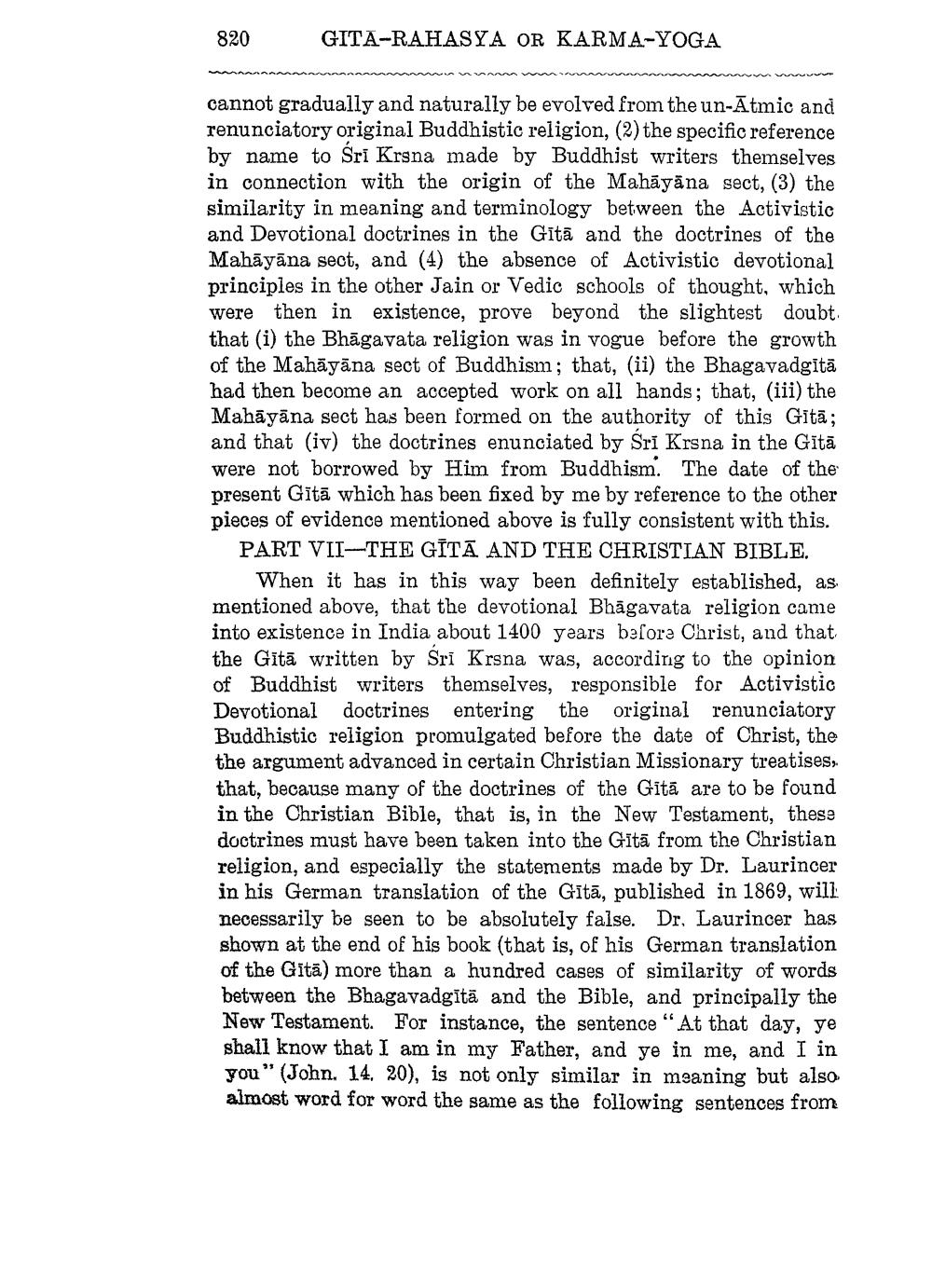________________
820 GITA-RAHASYA OR KARMA-YOGA
minuman cannot gradually and naturally be evolved from the un-Ātmic and renunciatory original Buddhistic religion, (2) the specific reference by name to Sri Krsna made by Buddhist writers themselves in connection with the origin of the Mahāyāna sect, (3) the similarity in meaning and terminology between the Activistic and Devotional doctrines in the Gītā and the doctrines of the Mahāyāna sect, and (4) the absence of Activistic devotional principles in the other Jain or Vedic schools of thought, which were then in existence, prove beyond the slightest doubt. that (i) the Bhāgavata religion was in vogue before the growth of the Mahāyāna sect of Buddhism; that, (ii) the Bhagavadgītā had then become an accepted work on all hands; that, (iii) the Mahāyāna sect has been formed on the authority of this Gītā; and that (iv) the doctrines enunciated by Sri Krsna in the Gītā were not borrowed by Him from Buddhism. The date of the present Gītā which has been fixed by me by reference to the other pieces of evidence mentioned above is fully consistent with this. PART VII-THE GĪTĀ AND THE CHRISTIAN BIBLE.
When it has in this way been definitely established, as mentioned above, that the devotional Bhāgavata religion came into existence in India about 1400 years before Christ, and that the Gītā written by Sri Krsna was, according to the opinion of Buddhist writers themselves, responsible for Activistic Devotional doctrines entering the original renunciatory Buddhistic religion promulgated before the date of Christ, the the argument advanced in certain Christian Missionary treatises, that, because many of the doctrines of the Gitā are to be found in the Christian Bible, that is, in the New Testament, these doctrines must have been taken into the Gītā from the Christian religion, and especially the statements made by Dr. Laurincer in his German translation of the Gītā, published in 1869, will necessarily be seen to be absolutely false. Dr. Laurincer has shown at the end of his book (that is, of his German translation of the Gitā) more than a hundred cases of similarity of words between the Bhagavadgita and the Bible, and principally the New Testament. For instance, the sentence "At that day, ye shall know that I am in my Father, and ye in me, and I in you" (John. 14, 20), is not only similar in meaning but also almost word for word the same as the following sentences from




